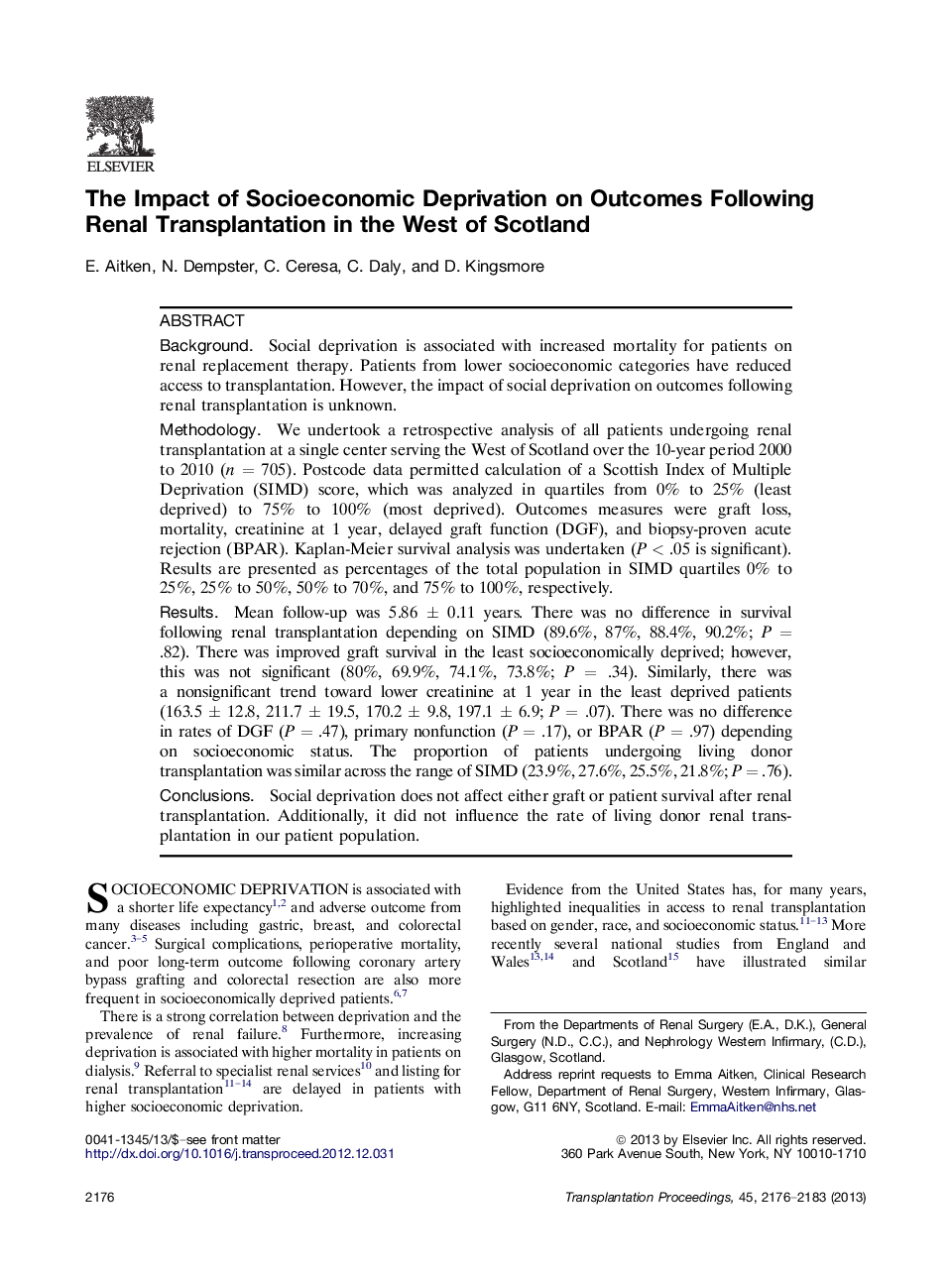| کد مقاله | کد نشریه | سال انتشار | مقاله انگلیسی | نسخه تمام متن |
|---|---|---|---|---|
| 4255649 | 1284495 | 2013 | 8 صفحه PDF | دانلود رایگان |

BackgroundSocial deprivation is associated with increased mortality for patients on renal replacement therapy. Patients from lower socioeconomic categories have reduced access to transplantation. However, the impact of social deprivation on outcomes following renal transplantation is unknown.MethodologyWe undertook a retrospective analysis of all patients undergoing renal transplantation at a single center serving the West of Scotland over the 10-year period 2000 to 2010 (n = 705). Postcode data permitted calculation of a Scottish Index of Multiple Deprivation (SIMD) score, which was analyzed in quartiles from 0% to 25% (least deprived) to 75% to 100% (most deprived). Outcomes measures were graft loss, mortality, creatinine at 1 year, delayed graft function (DGF), and biopsy-proven acute rejection (BPAR). Kaplan-Meier survival analysis was undertaken (P < .05 is significant). Results are presented as percentages of the total population in SIMD quartiles 0% to 25%, 25% to 50%, 50% to 70%, and 75% to 100%, respectively.ResultsMean follow-up was 5.86 ± 0.11 years. There was no difference in survival following renal transplantation depending on SIMD (89.6%, 87%, 88.4%, 90.2%; P = .82). There was improved graft survival in the least socioeconomically deprived; however, this was not significant (80%, 69.9%, 74.1%, 73.8%; P = .34). Similarly, there was a nonsignificant trend toward lower creatinine at 1 year in the least deprived patients (163.5 ± 12.8, 211.7 ± 19.5, 170.2 ± 9.8, 197.1 ± 6.9; P = .07). There was no difference in rates of DGF (P = .47), primary nonfunction (P = .17), or BPAR (P = .97) depending on socioeconomic status. The proportion of patients undergoing living donor transplantation was similar across the range of SIMD (23.9%, 27.6%, 25.5%, 21.8%; P = .76).ConclusionsSocial deprivation does not affect either graft or patient survival after renal transplantation. Additionally, it did not influence the rate of living donor renal transplantation in our patient population.
Journal: Transplantation Proceedings - Volume 45, Issue 6, July–August 2013, Pages 2176–2183